How To Take Pictures With A Camera
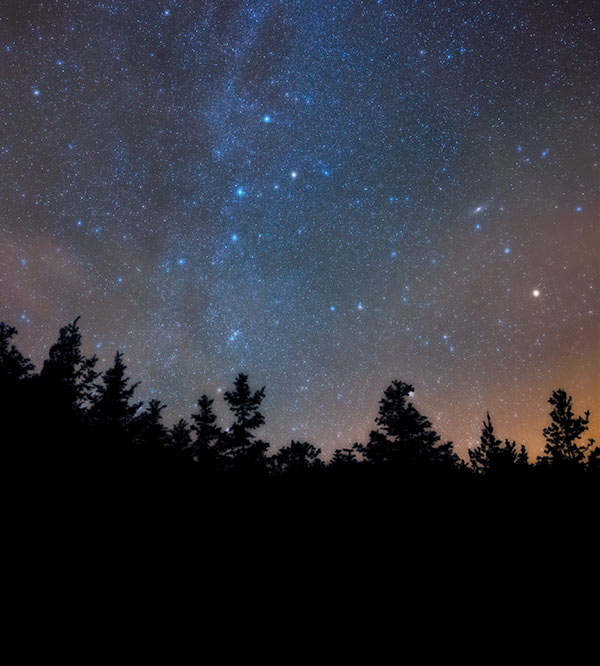
If you are wondering how to accept pictures of stars and the alluring wonders of the nighttime sky, look no farther. In this article, I'll share an absolute, bare-basic arroyo for capturing a spectacular photograph of the stars in a higher place the one below.
This includes covering which camera to utilize, the exact photographic camera settings I recommend, and the right conditions for a successful photo. I'll also cover some of the side by side steps to consider for dark heaven photography, including recommended low-cal pollution filters, and an introduction to star trackers.
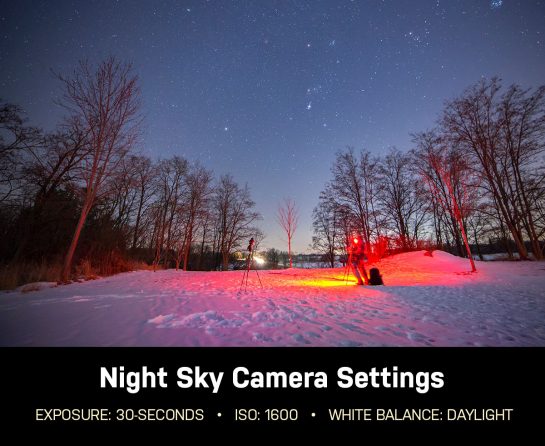
Anyone with admission to a DSLR camera and a tripod (or a steady surface) can take stunning photos of the nighttime heaven with all of its glorious stars. Yous volition even kickoff to run into some Nebulae, Galaxies, Globular Clusters, the Galaxy, Meteorites, Auroras, and more.
If you own a point-and-shoot camera, or are simply using your smartphone, you will need to tap into the manual settings that allow you to shoot long-exposure images.
Smartphones like the Google Pixel four (with astrophotography mode), and newer iPhone, Samsung, and Huawei models are getting better at low-light photography, but the pocket-sized sensors volition limit your success. You may be able to go some decent pictures of stars in the night sky with these devices, but for the best results, y'all need to get your hands on a DSLR or mirrorless camera.
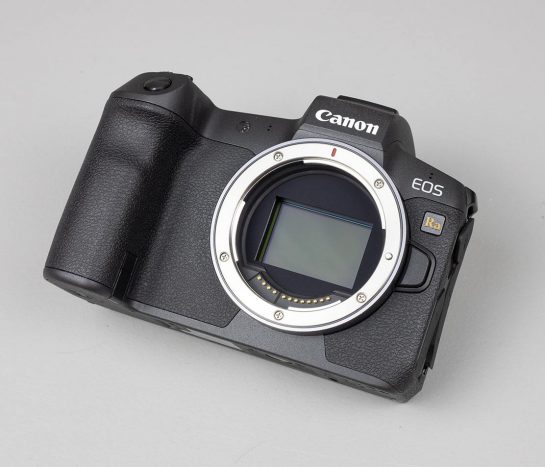
Canon's mirrorless astrophotography camera, the Canon EOS Ra.
The good news is, you don't demand an astrophotography camera similar the Canon EOS Ra to photograph the night sky successfully. Even an entry-level DSLR camera (such as the Canon EOS Rebel T7i) can produce spectacular results.
Take Stunning Pictures of the Night Sky
Taking pictures of a starry sky (nightscape photography) is a wonderful experience that may help yous acquire some of the constellations also. A camera sensor, like the i in your DSLR, is capable of recording much more than light than our eyes tin see. This is why we are able to enjoy much more item in a photograph than with our naked eye alone.
Whether you are only getting started with a new camera, or have just never attempted night photography before, the simple steps beneath should requite you a strong foundation to put into action the next time you are under a clear night sky.
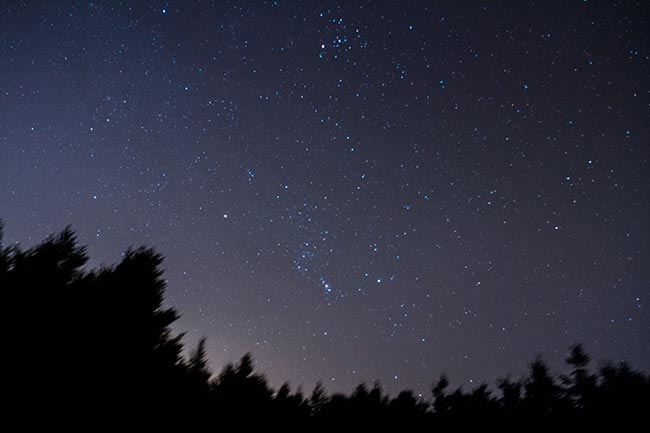
Related Post: 7 Astrophotography tips to put into activeness, tonight
The process of collecting long exposure images at night is very unlike from regular daytime photography. Focusing the lens, keeping the camera steady, and choosing the correct subject area for your setup are critical steps of the procedure.
The Basics: Camera Equipment
As I mentioned, in that location are plenty of suitable cameras for nighttime sky photography, but some will give you more control (and better results) than others. For example, those of you that take access to a DSLR or mirrorless photographic camera with detachable lenses have a huge advantage.
For this blazon of photography, remember to keep things lightweight and portable. For a keen shot of the stars, y'all may find yourself traveling to a distant location.
Here is a promising, entry-level night sky photography setup:
Essential:
- DSLR Camera (Or mirrorless trunk)
- Broad-Angle Lens (24mm or wider is best)
- Sturdy Tripod (Lightweight)
- Red Headlamp (To see at nighttime without ruining your "night vision")
- Retentivity Card (Easy to forget)
- Spare Camera Battery (Peculiarly in cold weather)
Extras:
- Planetarium Smartphone App (to help you locate objects in the dark sky)
- Remote Shutter Release Cablevision (To avert camera shake and gear up sequence)
- Heated band and controller (To prevent wet on the lens)
- Light pollution filter (Depending on location)
- Star Tracker (To take exposures longer than 30-seconds without star trailing)
Getting Started
Have you ever tried to take a picture show of the moon at night? Chances are (if you are new to astrophotography), the results were less impressive than y'all had hoped. Well, taking a successful image of the stars in the night sky tin can exist even trickier.
This is because night photography is unlike daytime photography, and creates many new challenges. Depression light situations crave a completely different approach to photography than you may exist accustomed to. It is non possible to have pictures of stars using the "auto" manner on your DSLR photographic camera, because it was not designed to record a nightscape image.
Instead, you'll need to use a specific ready of camera settings that allow you lot to capture long exposure images of the nighttime heaven and all of the wonderful treasures plant within it. The cameras used for the images in this guide were all Canon EOS Rebel-serial DSLR's.
Step 1: Camera Settings
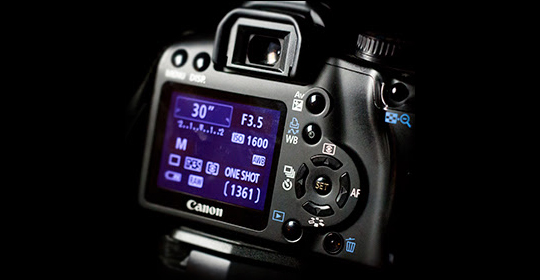
The first thing you lot will need to understand is that in social club to capture enough light for your camera'due south sensor to selection upwardly lots of stars in the photo, you need to accept a long exposure photo. This can range from five-30+ seconds depending on your equipment and conditions. To do this, you volition want to make sure your DSLR is in Transmission Mode.
Transmission mode gives yous complete control over each internal camera setting, and it can be a bit daunting to shoot in this manner for the showtime time. Manual mode is indicated by an Thou on your photographic camera's punch (Canon or Nikon).
The camera settings available to customize in this mode include:
- Aperture (F-Ratio) of the camera lens
- ISO (Sensitivity to Low-cal)
- Exposure Length (How long the shutter stays open)
- White Balance (Daylight, Auto etc.)
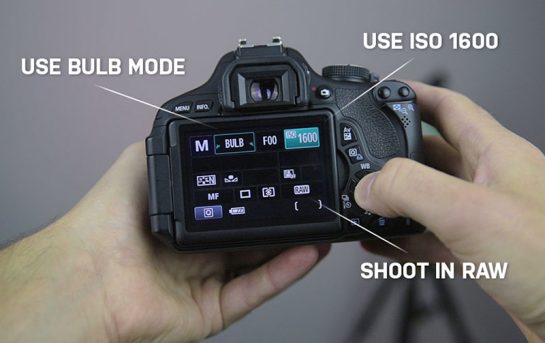
These variable camera settings will change depending on the photographic camera lens y'all are using. For example, if you are shooting with a lens that has a focal length of 18mm or lower, you shouldn't run into any star trails (due to the rotation of the earth) until you shoot an exposure of twenty seconds or longer.
Some photographers like to refer to the 500 Rule to determine the perfect exposure length for them to shoot using a particular camera and lens combination.
Wide-bending lenses (such every bit the Rokinon 14mm F/2.8) have an extremely large field of view, which not but capture more of the sky in a single shot but are also more forgiving in terms of star abaft. A lens with a longer focal length (such as the Canon 50mm F/1.8) volition capture a college magnification image, but stars will begin to trail much sooner.
For the guide beneath, I used a Canon 18-200mm F3.five lens, at the widest focal length of 18mm.
Exposure
The maximum exposure length you can shoot is generally limited to the focal length of your camera lens. Unless yous are intentionally trying to capture a star trail paradigm, this exposure volition likely exist nether xxx-seconds. If you want to shoot longer than that, a tracking camera mountain is needed.
If your exposure time is limited to under 30-seconds on a stationary tripod, you'll demand to experiment with the other photographic camera settings that affect the amount of calorie-free captured in a single shot. The focal ratio of your lens (eg. F/two.eight) can make a big bear on when it comes to collecting lite in a short menstruation of time.
This is called aperture, and it'due south one of the about important camera settings to consider when taking pictures of stars.
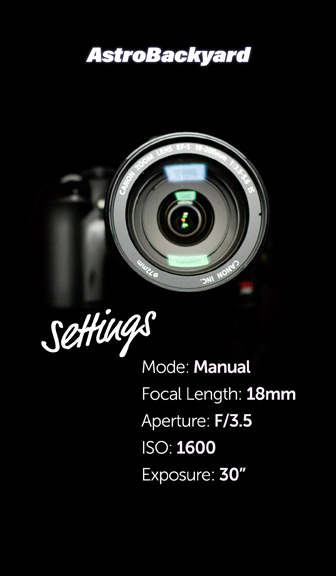
Aperture
On my camera lens, that is a setting of F3.5. The lower the F-number, the more calorie-free the photographic camera brings in.
ISO
The next setting you lot will want to adjust is ISO. This is the camera's sensitivity to light, which is very important for our purposes! Generally, you will want to use the highest ISO your photographic camera has, this may by 1600, or even 6400 or college.
Increasing your ISO will introduce more noise to your photo, simply the merchandise-off is more than stars and more light-gathering power. You may want to use a lower ISO if you lot are finding your photo to be too noisy. Modernistic photo-editing software tools like Topaz DeNoise AI exercise a great job of reducing noise in post-processing.
White Residuum
For our purposes, Auto White Balance or Daylight White Residuum works simply fine. You also want to brand certain that you are shooting your photos in RAW format. This gives you lot the opportunity to actually bring out the images full potential in post-processing. You will demand Adobe Photoshop to make these adjustments, and so if yous don't take it, a .JPG photo will have to do!
Step 2: Setting up your photographic camera on the tripod
At present that y'all have the proper settings for night-time photography, you are ready to point your DSLR to the heavens and capture more stars than you have ever seen with your naked eye alone! Deeply fasten your camera to your tripod via the removable mounting plate. Brand certain that all of your adjustment knobs are tight before leaving your camera on the tripod. DSLR'southward tin can be heavy, and yous volition be angling the head direct-up in some cases.
Focus
To reach a proper focus on the stars, do not apply autofocus. Manually focus your lens to infinity, then focus dorsum a hair. Accept some test shots and endeavor to become the stars to look as tight every bit possible. Another way to attain focus is to use the live-view way of your camera, and focus on something far away (like a street lamp). Zoom-in while in live-view to really get it right.
Star Trails
In a 30 second exposure, you will notice small-scale star trails because of Globe's rotation. (Aye, fifty-fifty in 30 seconds!) The star-abaft is subtle, and will not affect the overall look you are trying to achieve. If the stars are trailing too much for your liking, knock your exposure downwards to 20 seconds if y'all wish.
Stride 3: Take the shot!
Activating the Shutter
Set your drive manner to a 2 or 10-second delay to avoid shaking the camera slightly when activating the shutter. Y'all can observe this pick in the Even the slightest motility (similar pressing the shutter push) can exist enough to create a shaky shot! The drive mode choice screen should look something similar this:
Things to keep in mind
Make certain that your lens has not fogged up, or your shots will look blurry. A blow dryer will remove dew if necessary. Light pollution is your biggest enemy when information technology comes to astrophotography. Get as far away from city lights as possible for your star shots. If at that place is a metropolis glow well-nigh yous, betoken away from it. You may find that a shot in the urban center using a loftier ISO and long exposure produces a very bright, washed-out photo. If this is the case, crash-land your ISO down, and shoot a shorter exposure. eg. (ISO 800, 15 seconds)
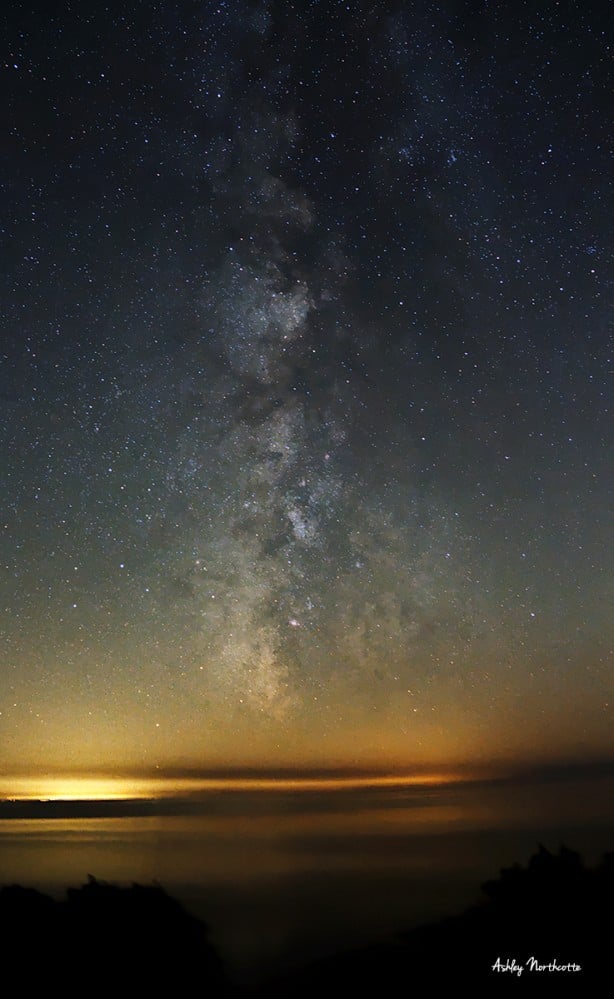
Side by side Steps: Stacking Exposures in Photoshop
One of the nigh effective ways to produce an bonny prototype of the dark sky is to take advantage of a technique known as image stacking. This involves placing multiple images on top of each other every bit layers in Adobe Photoshop.
There are besides a number of dedicated tools to accomplish this job including DeepSkyStacker, and Sequator. I recommend trying the manual method of paradigm stacking first, to encounter the power of signal-to-racket ratio in activity first-hand.
To create the prototype below, I manually stacked v x 30-2nd exposures shot at ISO 3200 in Photoshop. The key is to pace down the opacity of each layer gradually.
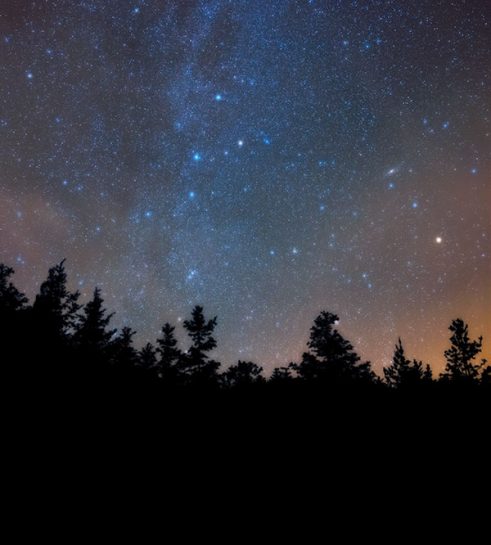
This picture was created by stacking five 10 30-2nd exposures in Photoshop.
The adjacent time y'all are out taking pictures of the night sky or the Milky Way, be certain to take a series of thirty-second images rather than just one or ii. Aim to capture nigh 10-20 pictures to realize the benefits of image stacking.
Adjacent Steps: Use a Star Tracker
A portable astrophotography setup similar the one pictured beneath is capable of capturing incredible deep-sky objects in the night sky. The Sky-Watcher Star Adventurer Pro is capable of tracking the night sky with a DSLR camera and a telephoto lens for long-exposure images.
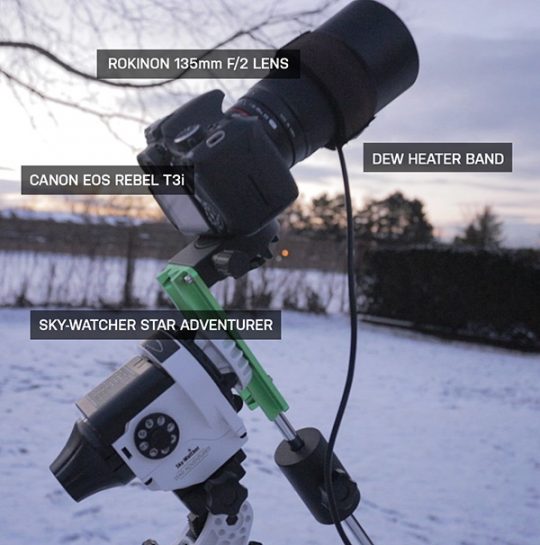
A portable deep-sky astrophotography setup.
A star tracker opens up the door to more than ambitious astrophotography projects such as faint, deep-heaven nebulae and galaxies. The setup shown higher up was featured in one of my videos where I photographed the Horsehead Nebula from my lawn.
The same basic principles of long-exposure night sky photography utilise to this configuration. The simply difference is that the star tracker allows me to shoot exposures of upwardly to 3-minutes in length without worrying about star abaft. To see of the best photos I've taken using a simple setup like this, encounter The Gear Behind my Best Astrophotography Images.
Related Posts:
- Canon EOS Ra Review
- How Photograph the Milky way (Tutorial)
- Using The Rokinon 135mm F/two Lens for Astrophotography
Related Posts
Source: https://astrobackyard.com/how-to-take-pictures-of-stars/
Posted by: dixonsularoat1955.blogspot.com

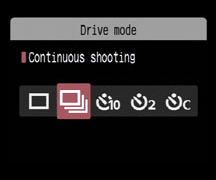

0 Response to "How To Take Pictures With A Camera"
Post a Comment